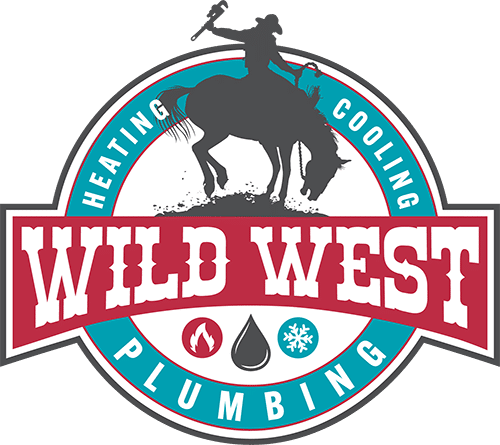A lot of wear and tear can occur to a plumbing system during winter. This can lead to issues like leaks, stress to pipes, and damage to appliances. Annual spring maintenance can prevent costly plumbing issues and ensure system efficiency and reliability.
Checking for Leaks
As freezing temperatures cause water to expand and contract, your pipes can experience substantial stress. This can lead to cracks, loose connections, and even pinhole leaks. Inspect your exposed pipes for any dripping, condensation, bulges, or pooling water.
Also, check for signs of corrosion, such as rust or discoloration. If your pipes are insulated with foam sleeves, consider removing a small section to inspect beneath. Pay attention to water pressure—any noticeable drop may indicate a hidden leak.
If you spot any leaks, they should be promptly repaired by a professional. Minor leaks may be addressed with plumbing tape or epoxy, while more severe damage may require pipe replacement.
Testing Your Outdoor Fixtures
Once temperatures rise, outdoor fixtures like spigots and hoses get back into use. As part of your spring checklist, turn on each spigot to check for normal water flow. Weak flow could indicate a leak, clog, or winter-related pipe damage.
If you’ve had freeze issues in the past, now is a good time to consider upgrading outdoor spigots to freeze-proof models. These feature a design that helps prevent trapped water from freezing and causing pipe cracks.
Ensure all hoses and attachments are flowing correctly. Replace any that are cracked or brittle. For irrigation systems, check for broken sprinkler heads and ensure even water distribution. Address any leaks to avoid water waste and landscape damage.
Sump Pump Inspection
Sump pumps often work hardest in the spring due to melting snow and rain. To test your sump pump, pour a bucket of water into the pit—if the float switch rises and the pump activates, it’s functioning properly.
Check the discharge line for clogs or ice buildup. Clear away any sediment or debris that may have collected in the pit during the winter. If your sump pump has a backup power source, make sure the battery is holding a charge. Most batteries need replacing every 3 to 5 years.
Water Heater Maintenance
Winter puts a heavy load on your water heater. In spring, inspect the area around the tank for any signs of leaks, rust, or corrosion.
Your water heater should be flushed annually to remove sediment buildup that can reduce efficiency and cause damage. A professional can also inspect the anode rod, which attracts corrosive elements to prevent tank deterioration. These rods typically last 3 to 5 years depending on water quality.
Also, check the temperature and pressure relief valve to ensure it opens and closes properly. For gas or electric units, inspect the connections for any signs of wear or malfunction.
Keep your water heater set to around 120 degrees Fahrenheit for safety and energy savings. You may even be able to lower this slightly during warmer months.
Water heaters usually last 8 to 12 years. If yours is aging, spring is a great time to explore more efficient replacement options. Newer models often qualify for rebates and offer energy savings.
Inspecting Drains and Sewer Lines
Drains and sewer lines should allow wastewater to flow freely. Gurgling sounds, slow drainage, or foul odors can indicate a clog or backup.
Tree roots often infiltrate sewer lines, especially in spring. A professional plumber can perform a camera inspection to identify root intrusion or damage. Avoid clogs by keeping grease, food scraps, and non-flushable items out of your drains.
Checking for a Toilet Leak
A toilet leak can waste up to 30 gallons of water a day. To check for silent leaks, add a few drops of food coloring to the tank and wait 30–60 minutes. If color appears in the bowl, there’s a leak that should be repaired.
Also inspect around the base of the toilet for signs of leaking, which can cause water damage to your floor. Cracks in the porcelain or loose seals can lead to problems if not addressed promptly.
Consider Your Appliances and Fixtures
Inspect all water-using appliances like dishwashers, washing machines, and filtration systems. Look for secure connections and signs of bulging or cracking hoses. Replace filters as needed—many manufacturers recommend changing them every 6 to 12 months.
Faucets that drip may need tightening or a replacement washer. Check caulking around sinks, tubs, and fixtures for signs of wear or mildew, and reapply as needed to prevent leaks.
Water Pressure Concerns
Ideal household water pressure is between 40 and 60 psi. A plumber can use a gauge to test pressure throughout your home. Uneven or high pressure in certain areas may indicate a hidden leak, sediment buildup, or a faulty pressure regulator.
Water pressure that’s too high can damage plumbing and fixtures. It can also increase the risk of backflow—when contaminated water reverses into the clean supply—posing a health hazard.
If high pressure is detected, a pressure-reducing valve may be installed at the main water line. If pressure is too low, a booster pump might be needed—but only after ruling out plumbing problems like leaks or clogs.
Wild West Plumbing, Heating & Cooling can help you with your spring plumbing inspections and maintenance.
We can also perform any necessary repairs, drain cleanings, and upgrades to ensure an efficient and reliable plumbing system. Reach out to Wild West Plumbing, Heating & Cooling in Kalispell to schedule an appointment today.


